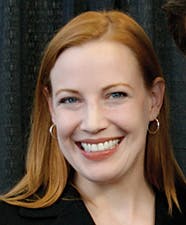Blackberry to iPhone: How dentistry has changed in the last 10 years
"Dentistry would not prove to be recession proof after all . . . Was it all downhill from 2005? To answer that question, I set out to review the most important changes in dentistry in the past 10 years."
2005was the year I joined the dental industry. I was congratulated and welcomed with comments such as, "Dentistry is recession proof" and "People will always need their teeth." Marketing budgets were flush, dental tradeshows were the place to be, dentists' incomes were at their peak,1 and technology was gaining momentum in dental practices. Technology was also taking over the workplace. While I held out as long as I could, eventually a Blackberry became inevitable. At that time, no one, with the possible exception of Steve Jobs, had heard of an iPhone. Yet ten years later, one out of every three cellphones in the United States would become an iPhone,2 and the Blackberry would go become virtually extinct. The smartphone would go from an accessory to an essential, and dentistry would prove not to be recession proof after all.
Was it all downhill from 2005? To answer that question, I set out to review the most important changes in dentistry in the past 10 years. Drawing from data collected by my employer, Henry Schein and others, I made some interesting discoveries that can help us meet the challenges of the next 10 years.
READ MORE | Top 2015 dental industry trends and 2016 predictions from the Apex360 Editorial Advisory Board
Harmony to hard cash
According to Henry Schein-surveyed dentists in 2005, the number one challenge in dental practices was team harmony. While it is no surprise that the elements of team harmony—conflict management, communication, leadership, behavioral styles, and employee engagement—are critical to the success of a practice, the fact that this was rated as the top challenge, above anything directly related to practice financials, is significant. In 2005, team challenges made office stress a greater obstacle for dentists than income or profitability.
Today, team harmony appears to be just as challenging for the average dental office as it was 10 years ago, but it has taken a back seat to the challenges of new patients, overhead, and cash flow. This change reflects the profitability pressures dentists now face from increasing competition, decreasing insurance reimbursements, and a reduced demand for dental services. While those challenges must be addressed, human capital remains the greatest asset of any business. The lesson is this: Addressing team engagement can increase production and differentiate your practice from competitors'.
Luddite to reluctant techno-geek
Technology has become increasingly intertwined in our personal lives; it now dominates our professional lives as well. Equipment and technologies (e.g., digital restorations, digital imaging), only considered by innovators and early adopters in 2005, are now reaching the early majority stage, which is considered to be between 15% and 50% adoption. While product improvements in ease-of-use and affordability have certainly contributed to rising market penetration, we can also draw a correlation to the profitability pressures in dentistry. Technology increases efficiency, allowing you to do things faster and often better. The tax-deductible investment itself can reduce your overhead and provide a return on investment. New technologies such as digital restorations have benefits that can be marketed to patients and used to differentiate your practice. High-tech can mean increased patient comfort. However, technology implementation must be carefully planned with dedicated time for team training and systems that connect, communicate, and work together to create the best possible patient outcome.
ALSO BY JEN MCGUIRE | Why Starbucks can charge us more (and we keep going back)
Fewer patients, less often
For the last 10 years, dental care utilization has been on the decline. While it seems to have flattened out for now, the ADA does not expect it to rise again in the near future.3 When surveyed, 23% of adults stated they did not plan to go to the dentist in the next 12 months. Healthy adults no longer feel compelled to automatically visit the dentist twice a year, even when they have insurance to cover the expense. Even though approximately 60% of the population has some type of dental benefits that include regular hygiene care, only 37% of adults visited a dentist in the last 12 months, compared to 41% 10 years ago.4 The number of patients who visit a dentist without public or private insurance to offset the cost is also declining, from 29.5% of all dental patients in 2005, to 27.6% in 2015.5 As a result, total patient visits have declined significantly. In 2005, dentists had 3,417.8 patient visits a year. In 2015, that number decreased to 3,119.5.5 The hygiene department is one of the largest areas of growth opportunity in most practices.
Untapped practice potential to . . . same
At least some things don't change. Although new patients are often assumed to be the answer to all practice challenges, when we look at individual practice data over the years, we find tremendous untapped opportunity for growing production without adding a single new patient. Most practices do not consistently meet the dentist's standard-of-care for hygiene visits, exams, and x-rays. Henry Schein reviewed the potential production opportunity available simply by meeting the doctor's standard of care in almost 7,000 dental practices in 2015. In hygiene alone, there was an average production opportunity of $241,161—if the practice brought in all active patients for their prescribed number of hygiene visits that year. How many new patients would your practice need to attract to create the production that could be added just by keeping current patients on their recommended hygiene schedule?
With small changes to hygiene protocols and patient education, you can rapidly increase hygiene production. Every patient should know that a dollar spent on preventative dental care can save them $8 to $50 in future treatments.6 Patients will not recognize or respect the connection between their oral health and overall health until they are educated to do so.
ALSO BY JEN MCGUIRE | 25 years later, image is still everything
Consolidation is the new solo practice
In 2005, only 8.2% of general dentists were classified as employees.5 In 2014, that number rose to 12.3%.5 The percentage of dentists who are solo practitioners has been dropping, and is expected to continue dropping with the growth of corporate dentistry and group practices. While many dentists are content to give up the management and leadership challenges of running a business to become employees, what does this mean for those who choose to retain their independence as solo practitioners? Many have chosen to focus on the business of dentistry, enhancing the operations of the practice for greater profitability to successfully compete in their market. Others have created niche practices that differentiate themselves and use a targeted approach to attract patients. Bruce Cassis, DDS, of Fayetteville, West Virginia, shares how financial pressures have changed his business practices: "In the last 10 years, pressures from PPOs, corporate dentistry, and changing patient demographics have forced me to run a better, more efficient business. By investing in new technologies and training, I've been able to treat patients better and faster while creating a better patient experience. We've also begun outsourcing our key business functions such as marketing, HR, accounting, and payroll. This has put our operations in the hands of experts and allowed us to focus more on patient care."
MySpace to Facebook
In 2005, MySpace was the most popular social networking site in the US.7 Online marketing meant dentists had a website, which was only possibly optimized for search engines. Savvy dentists collected patient e-mail addresses and used patient newsletters as a way to market optional services and stay in contact with patients. Today, dentists must do all of that while generating online patient reviews, posting engaging social media content, and connecting with patients through their preferred social media channels. The good news is that social media marketing is considerably less expensive than other online marketing channels. The bad news is that many practices are only doing a fraction of what is needed to generate a return on investment for social media marketing. Don't underestimate this component of your marketing plan; invest in training and resources to develop a social media strategy beyond simply being present on social media.
While dentistry is always evolving, the last 10 years in particular have seen some drastic changes. If you haven't evaluated how these changes have impacted your practice and how they will continue to impact it over the next few years, now is the time. Schedule a business meeting with your Henry Schein representative to review your practice metrics and create a plan to meet and exceed your goals for the next decade.
References
1. Soderlund K. Health Policy Institute reports dentists' earnings as stagnant. ADA News. http://www.ada.org/en/publications/ada-news/2016-archive/january/health-policy-institute-reports-dentists-earnings-as-stagnant. Published January 11, 2016. Accessed April 18, 2016.
2. Whitney L. iPhone market share drops in US but climbs across Europe. CNET website. http://www.cnet.com/news/iphone-sales-drop-in-us-but-climb-across-europe/. Published August 5, 2015. Accessed February 15, 2016.
3. Munson B, Vujicic M. Dentist earnings not recovering with economic growth. ADA Health Policy Institute Research Brief. ADA website. http://www.ada.org/~/media/ADA/Science%20and%20Research/HPI/Files/HPIBrief_1214_1.ashx. Published December 2014. Accessed April 18, 2016.
4. Data from the Medical Expenditure Panel Survey (MEPS) between 2000 and 2010. US Department of Health and Human Services website. http://meps.ahrq.gov/mepsweb/s. Accessed April 18, 2016.
5. 2014 Income, Gross Billings and Expenses. American Dental Association website. http://www.ada.org/en/science-research/health-policy-institute/data-center/dental-practice Published December, 2015. Accessed February 15, 2016.
6. American Dental Hygienists' Association (ADHA). Access to care position paper, 2001. City (IL): ADHA; c2004.
7. Glenn D. The History of Social Media from 1978 - 2012 [Infographic]. SocialTimes website. http://www.adweek.com/socialtimes/the-history-of-social-media-from-1978-2012-infographic/90816. Published February 16, 2012. Accessed April 18, 2016.
Jen McGuire, with more than a decade of marketing experience in the health-care industry, now leads the marketing of Henry Schein Dental's Business Solutions. Jen developed and launched dentistry's first wellness program, Total Health Beyond the Mouth. Contact her at (800) 372-4346 or at [email protected].







